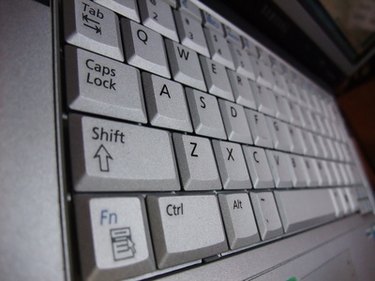
Typing lag most often occurs as the result of a lack of memory. Adding additional RAM to the memory slots can ameliorate this lag. However, even computers with sufficient memory can experience poor keyboard performance. "Filter Keys," a setting in the Windows "Accessibility Options," ignores short or repeated keystrokes, which a user may interpret as lag. Users can alter the keyboard's settings from the control panel to speed up the keyboard's response.
Step 1
Click "Start." Choose "Control Panel" from the right pane. Type "accessibility" into the search field. Press "Enter."
Video of the Day
Step 2
Choose "Make the keyboard easier to use" from the options. Uncheck "Turn on Filter Keys."
Step 3
Click "Apply." Scroll to "See also." Choose "Keyboard Settings" from the links.
Step 4
Select the "Speed" tab. Drag the slider below "Repeat delay" to the right to decrease the amount of time it takes before the computer begins to repeat a specific key. Drag the slider below "Repeat rate" to the left to increase the rate at which Windows repeats a key.
Step 5
Click "OK" twice to save the changes.
Video of the Day
Tips & Warnings
- Close all open programs except "Notepad." Attempt to type into the application. If the keyboard no longer lags, a program is interfering with the performance of the device.
- If you are using a USB keyboard, plug the keyboard directly into the PC. Don't plug the keyboard into a keyboard hub, which can interfere with the performance of high-performance keyboards.